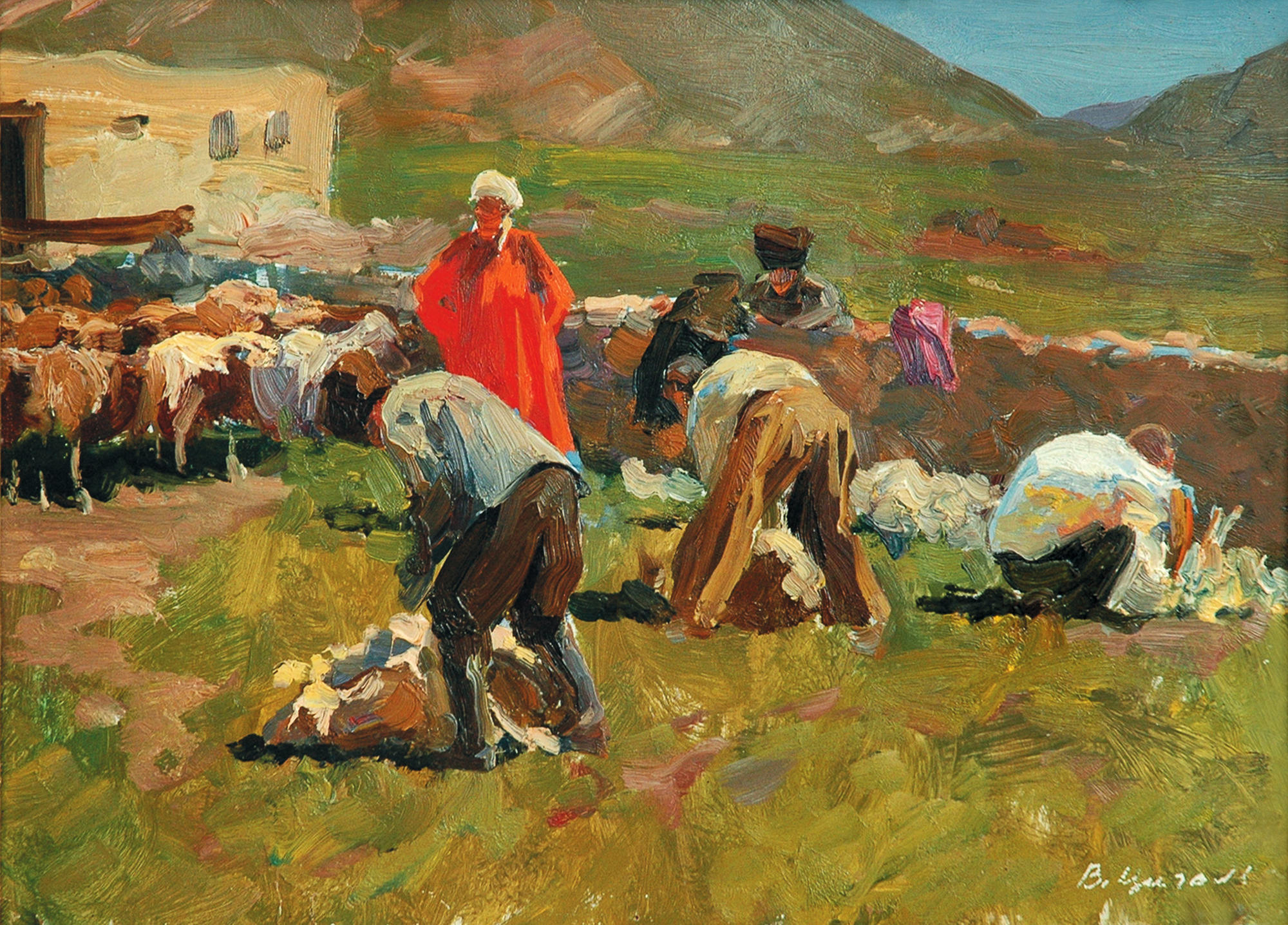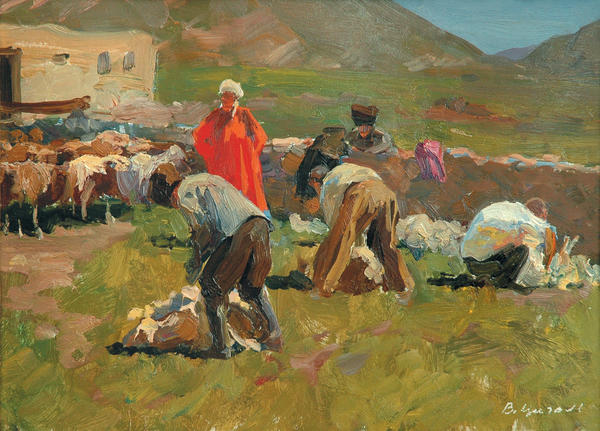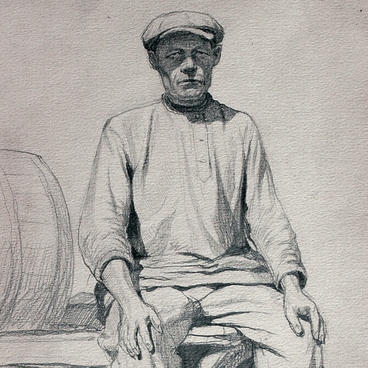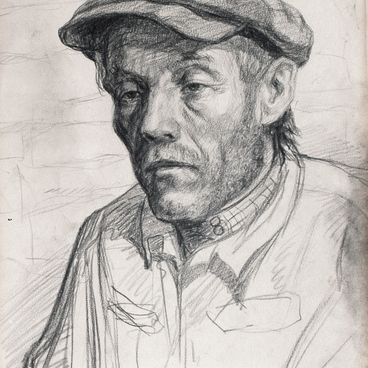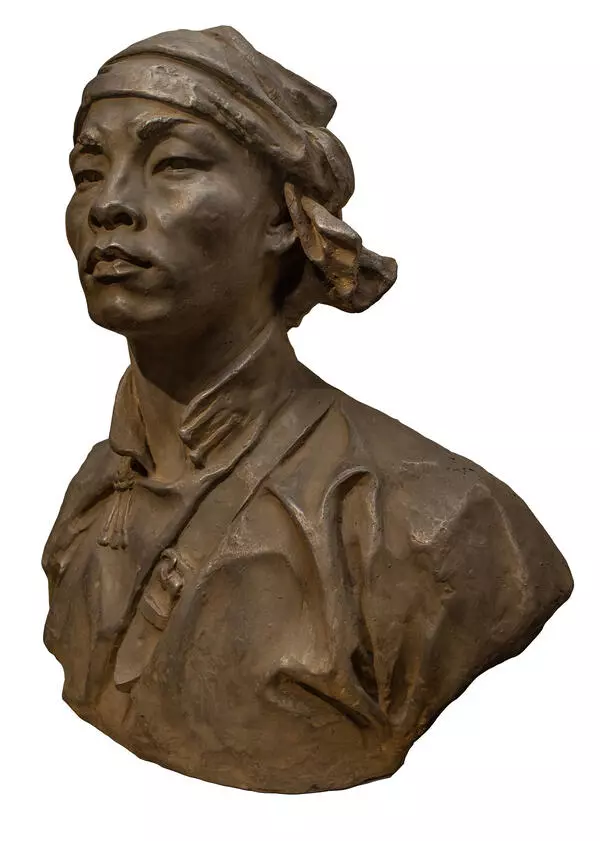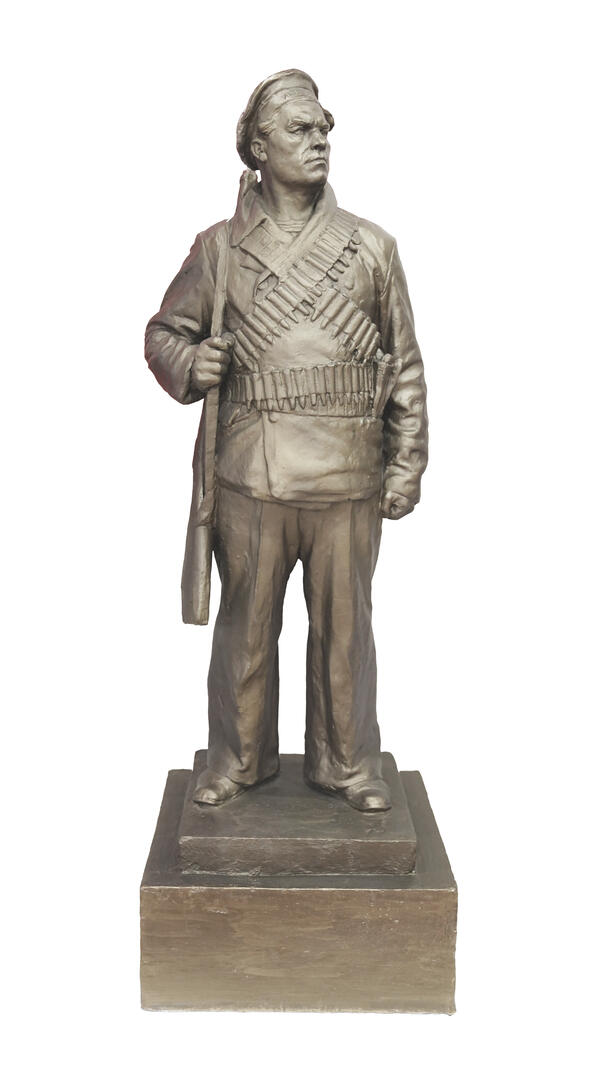The painting Shearing sheep. Balkhar. Dagestan is the work of People’s Artist of the Russian Federation Viktor Tsigal. The painter travelled a lot around the country and abroad. Dagestan was one of Tsigal’s favourite places, and he went back there more than once in his life. The village of Balkhar is the centre of artistic ceramics for highland Dagestan. After his visit, the artist himself worked with clay for some time, creating fanciful figures.
Shearing sheep. Balkhar. Dagestan
Время создания
1958
Размер
33x48 cm
Техника
oil, cardboard
Коллекция
Выставка
1
Открыть в приложении#1
Victor Tsigal
Shearing sheep. Balkhar. Dagestan
#6
#7
Victor Tsigal. Photo by Lipetsk Regional Art Museum
#8
Victor Tsigal was born in Odessa in 1916. In 1930, the family moved to Moscow, where Victor matriculated at the 1905 Moscow Art College, and in 1938 at the V. Surikov Moscow State Academy Art Institute. He fought during the way, was enlisted as a motorcyclist rifleman in the Ural Volunteer Tank Corps. During the war he drew more than 250 pencil portraits. His creative interests were broad – he was actively engaged in painting and book illustration and created sculptures from wrought iron.
A whole cycle of works by Victor Tsigal is dedicated to Dagestan. From 1958 to 1962, he and the artist Ivan Sorokin traveled throughout the region and stayed in the villages of Balkhar and Kubachi. In 1960, Viktor Tsigal received the silver medal of the USSR Academy of Arts for a cycle of works Dagestan. His work from Dagestan is distinguished by a special composition with a clear separation of plans and a bright but simultaneously restrained palette. An important place in Tsigal’s work is occupied by man connected to nature. The artist’s work lacks the traditional pathos inherent to the works of socialist realism. They are lyrical but at the same time reliably reflect the picture depicted.
The painting depicts the shearing a sheep in a mountain village. Sheep shearing occupies a crucial period in the agrarian calendar of the highlanders. It was accompanied by various ceremonies. For example, on the night before the shearing, a bonfire was built in the shed, which, according to popular beliefs, contributed to a good shearing. In the villages, competitions were organized between shearers. Shearing sheep required not only physical strength but also accuracy. In order to avoid injury to the animal, the shearer must carefully lay it on its side, with its back to him and with clean movements, manually cut by segment. Up to 15 sheep were usually sheared per day. The most dexterous shearers could process up to fifty sheep a day.
A whole cycle of works by Victor Tsigal is dedicated to Dagestan. From 1958 to 1962, he and the artist Ivan Sorokin traveled throughout the region and stayed in the villages of Balkhar and Kubachi. In 1960, Viktor Tsigal received the silver medal of the USSR Academy of Arts for a cycle of works Dagestan. His work from Dagestan is distinguished by a special composition with a clear separation of plans and a bright but simultaneously restrained palette. An important place in Tsigal’s work is occupied by man connected to nature. The artist’s work lacks the traditional pathos inherent to the works of socialist realism. They are lyrical but at the same time reliably reflect the picture depicted.
The painting depicts the shearing a sheep in a mountain village. Sheep shearing occupies a crucial period in the agrarian calendar of the highlanders. It was accompanied by various ceremonies. For example, on the night before the shearing, a bonfire was built in the shed, which, according to popular beliefs, contributed to a good shearing. In the villages, competitions were organized between shearers. Shearing sheep required not only physical strength but also accuracy. In order to avoid injury to the animal, the shearer must carefully lay it on its side, with its back to him and with clean movements, manually cut by segment. Up to 15 sheep were usually sheared per day. The most dexterous shearers could process up to fifty sheep a day.
#9
V.E. Tsigal. Self-Portrait. 1953. Photo by Lipetsk Regional Art Museum
#10
Lipetsk Regional Art Museum
читать дальшескрыть
00:00
00:00
1x
Shearing sheep. Balkhar. Dagestan
Время создания
1958
Размер
33x48 cm
Техника
oil, cardboard
Коллекция
Выставка
1
Открыть в приложении
Поделиться
